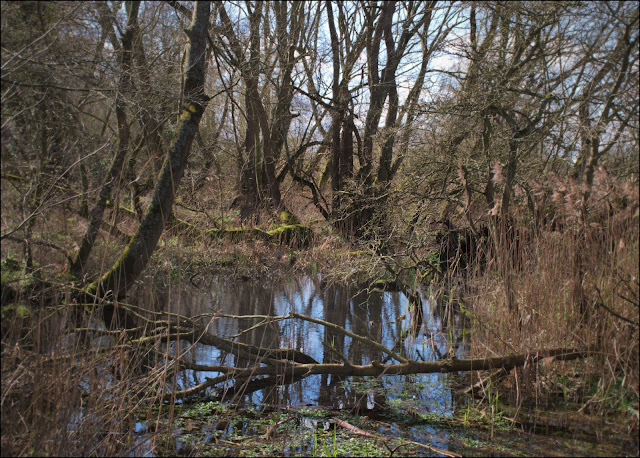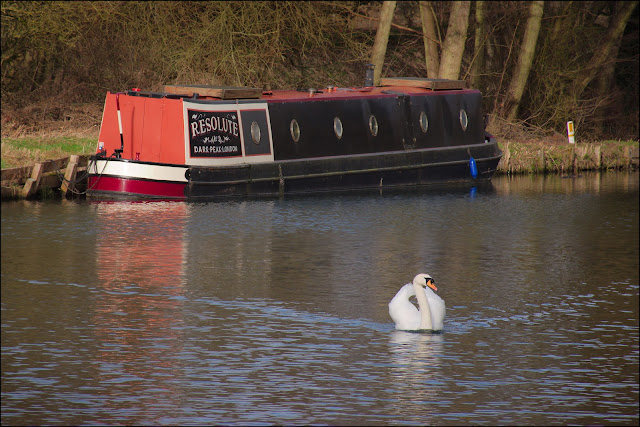After completing our circuit around the "Mysterious Meres" (the previous post), we made a short journey to the town of Thetford and parked near Nuns' Bridges.
Nuns' Bridges span the rivers Thet, Little Ouse and a minor tributary. Britain's oldest track, the Icknield Way crossed the rivers at this point and the local Nunnery paid for the construction of the three bridges, then collected tolls from those who crossed - it was a common way to fund religious houses in Medieval times.
Many ducks and geese haunt the river today in search of any scraps from picnickers. But there is a ghost too, though perhaps not a very scary one. Little George Dacre, the step-son of the Duke of Norfolk, was staying nearby when he fell from his rocking-horse and died in 1569. The ghost of a small boy on a headless rocking-horse is said to haunt this place.
The bridge leads to the British Trust for Ornithology's headquarters in the grounds of the old Nunnery. The BTO concerns itself mainly with research into bird population and migration, but it does also care for a small reserve here on the outskirts of Thetford.
The reserve consists of several types of habitat: the river and its floodplains, lakes formed in old gravel pits, wet woodland and open meadows.
Even if you don't see anything rarer than these two Canada Geese, it's still a pleasant place to wander.
We completed our stroll by returning on a well-made path through an area of (very) wet woodland and arrived back at Nuns' Bridges.
We sat in the car and ate our packed lunch under the watchful and covetous eyes of a pair of Canada Geese, before heading a short way out of Thetford in search of a small, brown tourism sign that we'd passed by on many previous occasions. Just a few steps from the rough sandy car park we spied this:
It looks very like the fortified "pele towers" that exist in the borderlands between England and Scotland, which protected farming families from the border raiders who terrorised the population on both sides of the border for centuries. But surely nothing like that went on in sleepy old Norfolk?
It turns out that Thetford Priory once kept something here that was, in those days, hugely valuable and which gangs of armed men came to steal. The man charged with looking after this precious asset lived in this fortress-like stronghold to prevent harm coming to him and his family. And what could this priceless treasure be?.......Rabbits!
Rabbits were much less common back then and their meat and fur were highly prized (and highly priced!). Thetford Warren Lodge, built around the year 1400, was the home of the warrener, who oversaw a walled area that was the size of modern-day Thetford, wholly dedicated to the raising of rabbits. Upstairs were the living quarters - you can still see where the fireplace was - while on the ground floor he stored his traps and other tools of the trade.
There's also some evidence for the Lodge was at times used as a base for hunting parties. And now we're off to hunt for something which I promised I'd show you many moons ago.
Take care.






















































